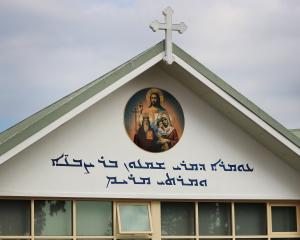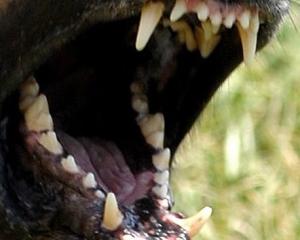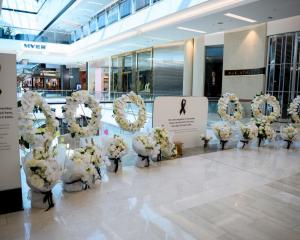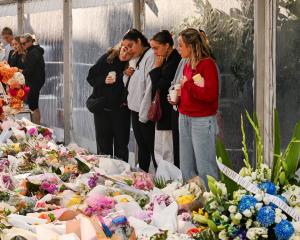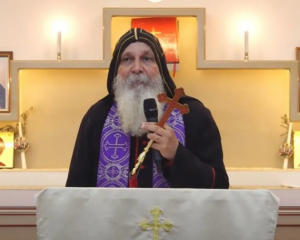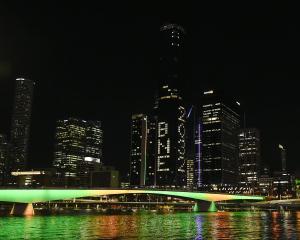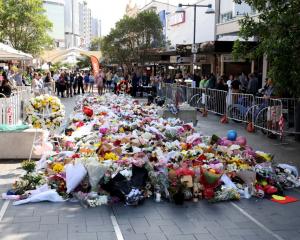A couple preparing to defend their property from a "megafire" burning northwest of Sydney say conditions are unlike anything they've seen before as emergency bushfires rage across New South Wales.
Residents from the south coast to the Queensland border are living in fear, the premier said on Friday, while acknowledging it was unusual to have blazes stretching along the entire coastline.
Smoke from the fires was drifting across to New Zealand and affecting communities there, NSW Rural Fire Service commissioner Shane Fitzsimmons said on Friday.
There are currently more than 100 fires burning with more than 70 uncontained.
There were seven fires at an emergency level at 5pm on Friday, including the huge 250,000-hectare bushfire at Gospers Mountain northwest of Sydney which has joined up with the neighbouring Little L Complex and Paddock Run blazes.
Emergency warnings are also current for the nearby Wrights Creek blaze west of Kulnara, the Kerry Ridge fire in the Wollemi National Park and the Meads Creek West fire in the Goulburn River National Park.
Elsewhere emergency warnings were current for the Green Wattle Creek blaze near Warragamba Dam, the Carrai East blaze northwest of Kempsey and the Bangala Creek bushfire near Tenterfield.
There are additionally 12 major blazes at "watch and act".
Martin and Karen Waterman have spent the past few weeks preparing to defend their Karingal Equestrian Centre at Mangrove Mountain, northwest of Sydney, where they live with 22 horses.
The fires heading towards them are "different to anything that has been up here," Ms Waterman told AAP on Friday.
"We haven't had these circumstances ever that I know of."
Hawkesbury City Council deputy mayor Mary Lyons-Buckett says the blazes can only be described as a "megafire".
Properties may have been lost and damaged on Thursday - particularly at Bawley Point on the south coast - but exact figures won't be known until assessment teams can safely enter the burned-out areas.
"The difference now as we lead into the summer months is previously they (bushfires) were pretty much confined to the northern part of NSW but what we are seeing this week is our resources stretched across the entire coastline," Premier Gladys Berejiklian told reporters.
Six people have died so far this fire season while more than 680 homes have been lost.
Ms Berejiklian said many families had been forced to leave their homes as some 2800 firefighters continued battling blazes on Friday supported by 100 aircraft.
"Our thoughts are with the people who have been displaced and people who are living in fear" throughout NSW, the Liberal leader said.
Fire crews have arrived from interstate as well as New Zealand and Canada, while a team from the United States will arrive on Saturday.
Mr Fitzsimmons said Friday would be "another extremely busy day" with temperatures reaching into the high 30s in some places coupled with very low humidity.
"We can't overstate the effect that this profound drought is having," he said.
"You are seeing fires start very easily and they are spreading extremely quickly and they are burning ridiculously intensely."
The commissioner said Sydney could remain blanketed in smoke for weeks if not months given it's now ringed by fires.
"Unless we are blessed with good, strong, easterly winds - which would push any smoke burning from fires into the west of NSW - we are going to continue experiencing smoke inundation along the coastal strip of this state for some time yet," Mr Fitzsimmons said.
Ms Berejiklian has repeatedly said now is not the time to talk about the impact of climate change on bushfires.
But according to a UNSW community survey released on Friday, some 53 per cent of respondents say it is right to talk about global warming during extreme events.
Just 35 per cent of Australians surveyed said it's not OK.
Almost the entire coastal area of NSW and much of the state's northeast is under a severe fire danger rating.

